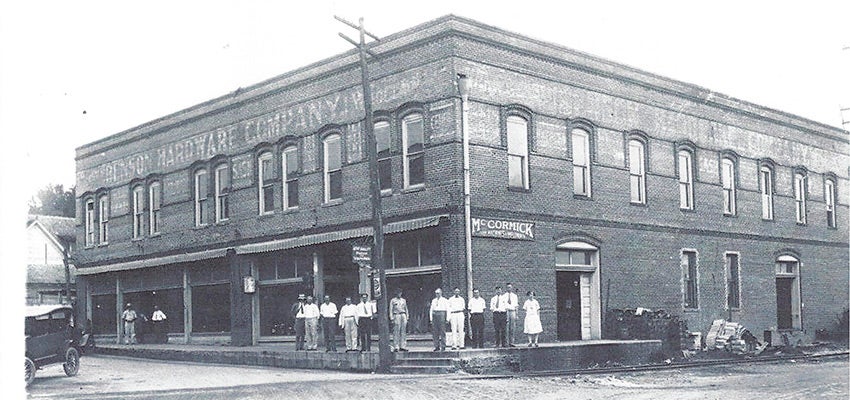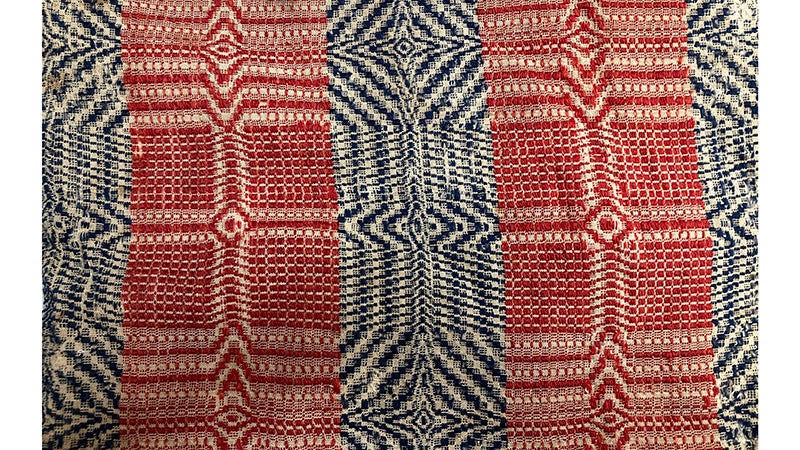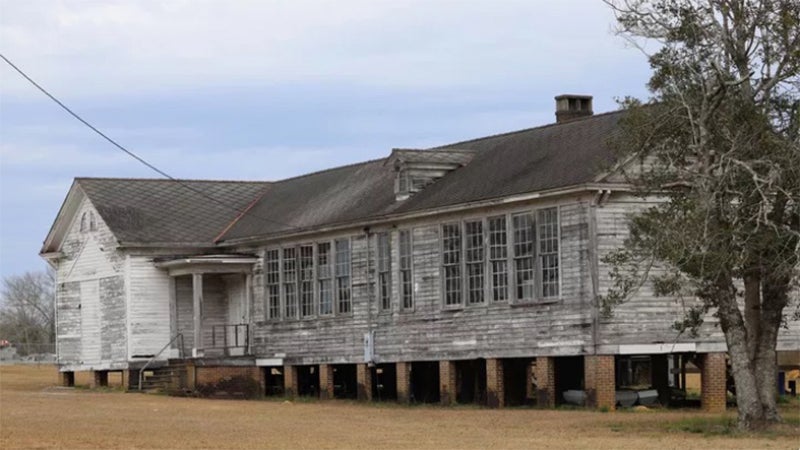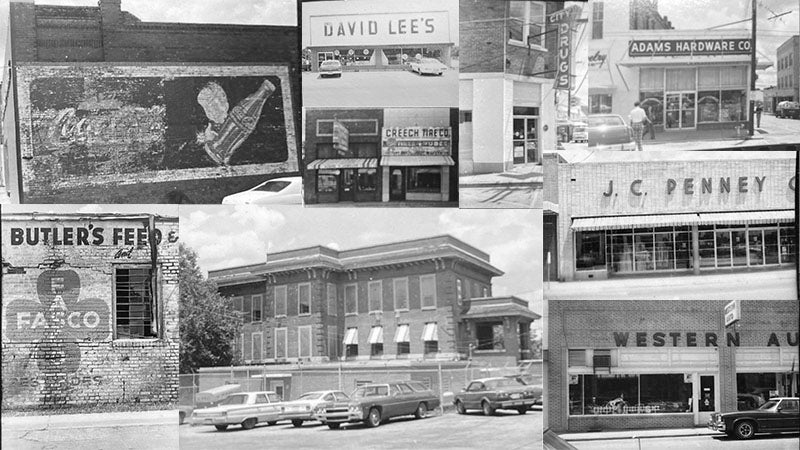Remember when: Home sweet home then and now
Published 2:46 am Saturday, September 23, 2017

- McCormick
It is mind-boggling to look at pictures of the old Andalusia homes on the main streets and in the neighborhoods that were built a little before and after 1900. The majority no longer exist. Sometimes the stately residences were not kept up, because their owners were aging and were unable to do ordinary maintenance and upkeep. Death often claimed the “lords and ladies of the manor” at which time absentee relatives would sell the homes. Several grand residences burned. In some cases properties in disrepair were sold only to be razed and converted to commercial ventures such as banks, shopping centers, restaurants, grocery stores, post office, furniture stores – all on the main streets. If we could ride down East Three Notch, South Three Notch, or River Falls Street and view what used to be the homes of yesteryear, our town would surely be a popular host town to visitors for the annual spring tour of vintage homes!
Dr. Bill Hansford’s book, “Andalusia, Alabama,” contains a treasured collection of photos of older homes and buildings built in another time when Andalusia was fast growing. “No longer standing” and “No longer exists” and “Demolished” are the labels Hansford attached to many of the descriptions of the structures pictured in his volume.
Remember when – Wood burning stoves became available and kitchens were moved into the homes. I do not think any of us living remember this, but we baby boomers remember our grandmothers telling us about the conversion to modern cooking inventions. Stories of the ice box and the ice man’s weekly delivery was also interesting!
Remember when – Chinaberry trees lined the Public Square. A hand-drawn map of early downtown Andalusia in 1900 drawn by L. F. Adams in 1950 as recollected by Walter L. Howell shows a road across the square diagonally from East Three Notch to South Three Notch. Town population was approximately 400. Several homesteads along with a bar room, a jeweler, the Dunson stables, the jail, a doctor’s office, the post office, the Smith boarding house, Judge Riley’s home, Widow Jones’ home, the Prestwood Hotel, the Cawthon home, the W. F. Howell newspaper office, the Baptist and Methodist churches, and the courthouse in the middle of the square are all shown on the drawing.
Remember when – The J. L. Adkison Saloon on the corner of Coffee and South Cotton Streets was taken down before 1919 when construction of the new First National Bank building was started in the early 1920s. There are some of those original whiskey jugs from the Adkison liquor dealer still around with some local collectors. I do believe from what I have read that the local Women’s Temperance Union promoted the removal of the bars around the square. One woman of the day expressed her fear of going to shop downtown without an escort for fear of being accosted by an inebriated sidewalk straggler!
Remember when – The S. D. and Luna Brooks home was located where Dr. Reid Kerr’s office is now situated. The Barbara Brooks and Jimmy Utsey wedding party was photographed in the living room during World War II days, because several of the groomsmen including the groom were wearing naval pilot uniforms, and that time frame was evident.
Remember when – The watering trough for horses and mules was located on the east entrance to the Public Square. It was removed in the early 1940s when a traffic light on a pole replaced it. More and more people were driving automobiles at that time so the traffic light became necessary.
Remember when – Prior to the late 1930s before Foreman Funeral Home was established, bodies were embalmed in the back of Benson Hardware on Central Street then taken to the funeral home on South Three Notch Street for the wake. The funeral was sometimes held at homes, churches, or at the cemetery. The Benson Funeral Home establishment was housed in a lovely two-story house on the lot south of the Presbyterian Church. The Nat Waller Service Station was between the church and the funeral home before the church purchased the property and built their fellowship hall addition.
Remember when – Andalusia’s largest department store was Covington Stores who sold the best in fashion names for ladies’ and gentlemen’s apparel. There were two entrances, one for the men, one for the women. The Shreve and Milligan building once a one-story structure is now the two-story Murphy building.
Remember when – Mrs. Georgia Coleman Marshall continued to operate Marshall’s Funeral Home on North Cotton Street following the death of her husband, Mr. Simpson Marshall, in 1955. She required that a “white dove” be placed on all of the casket sprays. She was certainly a civic-minded business owner!
Remember when – “Queen Anne” homes built in the late 1800s such as the Alonzo Pelham cottage home on the corner of East Watson and South Cotton Streets were often referred to as “painted ladies.” The millwork would be a different color than the house, a fashionable treatment of the day.
Remember when – There was an effort to preserve historic Andalusia when the opposition to cutting the Three Notch oaks, widening the streets, and making the town square into a parking lot was led by Mrs. Henry Edward Jones, daughter of Richard Henry and Zenobia Jones whose home was on the lot later purchased by the Social Security office building. (Aunt) Ara Henderson was also one of the activists.
Remember when – The Zack Dan Studstill home was once located across from the Methodist Church where the Sonic Drive-In Restaurant is now located. Many citizens remember the beautiful beveled glass entry that reflected the Christmas tree multi-colored glittering lights that passers-by always admired. Mr. Studstill was a mayor of Andalusia around 1912 and a pioneer in the movie theatre business in several South Alabama towns – the Pickford, the Royal, and the Paramount.
Remember when – The name of the South Three Notch Church of Christ was changed to Central Church of Christ. The Samford Barron family moved to Covington County around 1875 and upon arriving in Andalusia, they established a congregation which first met in their home on River Falls Street, later in the Masonic Building (on north Court Square) and in a school on Church Street. By 1900 the group had grown. In 1955, the congregation purchased property from S. D. Brooks to construct a brick house of worship with auditorium and classrooms.
Remember when – The John Grant Wright Grocery Store on the corner of South Three Notch and Baisden Streets used to be the Faulkenberry Grocery Store. The Jacob Henry and Minnie Amelia Faulkenberry home was next door to the store. It is remembered that the Faulkenberrys first lived in a log cabin that is said to exist inside the present home whose façade has been changed through the years. A wrap-around porch and picket fence decorated the beauty of the main street home. Even though there were nine children, Irene Faulkenberry Hines was the last daughter to reside in the home until her death. She had a choice seedling Camellia which she named “Faulkenberry.” The Irene Hines Bell Choir at First Baptist Church is named in her honor.
Remember when – Sixth Avenue and the nearby College Street vicinity was a popular and scenic residential area with the McArtan Queen Anne Victorian, the C. B. Mathews neocolonial bungalow style home, the Barnes-Givens Edwardian home, the Dillard residence, the John O. Ellisor home, the Stuckey-Mooneyham exquisite green shingle Queen Anne, the Malcomb home, the J. A. Godwin southern Vernacular design home, the A. C. Wilder gracious dwelling, the Mashburn and Kilpatrick homes, the Merrill-Livings home, the Merrill-Mahone home, the Johnson vintage bungalow, the Dr. L. D. Parker Craftsman home, the Dunn bungalow, and other early 1900s homes. That neighborhood is now the J. W. Shreve Historic District (Circa 2009) thanks to Linda Brogden Palmer, Andalusia native, Huntsville resident, and owner of the Givens house that she and her husband are restoring. All of these homes, elegant and unique, are rich in Andalusia history and architecture with current owners who have restored these properties for the enjoyment of another generation in another century.
Remember when – The first Andalusia Public Library building was built (Circa 1939) thanks to the women of the Andalusia Study Club. The building is Colonial Revival design thanks to Dr. Bill Hansford who identified the architecture and wrote about this building and the homes listed in this column which are all part of the J. W. Shreve Historic District, National Register properties. Mrs. Ernestine McLeod was the librarian in the 1950s. I can still remember the smell as I walked from East Three Notch School in the afternoons into that library, the musty smell of leather, paper, ink, and the materials that books are made of. When my friends and I entered the front door of the library, one was expected to “whisper!”
Other home, church, public building, and town histories are contained in the book called “Andalusia, Alabama” by Dr. William Casson “Bill” Hansford of Birmingham, former Andalusia resident. I will review more in upcoming columns.
Prior to leaving for college and medical school, the observant Hansford made house calls to many of these places with his mother, Grace Hansford, a nurse and physician’s assistant. This author has compiled a collection of photographs, histories, genealogies, and stories about what he refers to Andalusia, his hometown, as, “the city he loves and the people he loves.”
This book he wrote in collaboration with Linda Brogden Palmer can be purchased in the gift shop at the Three Notch Museum on Historic Central Street. For out-of-towners, one will be mailed to you if you will phone the museum docent, Linda Castleberry, at 334-222-0674 most weekday mornings. Hansford generously donated all of the books to the museum project. You can read, share, browse through this magnificent historical hardback edition, and REMEMBER WHEN.
Sue Bass Wilson is a local real estate broker and long-time member of the Covington Historical Society. She can be reached at suebwilson@andycable.com.






